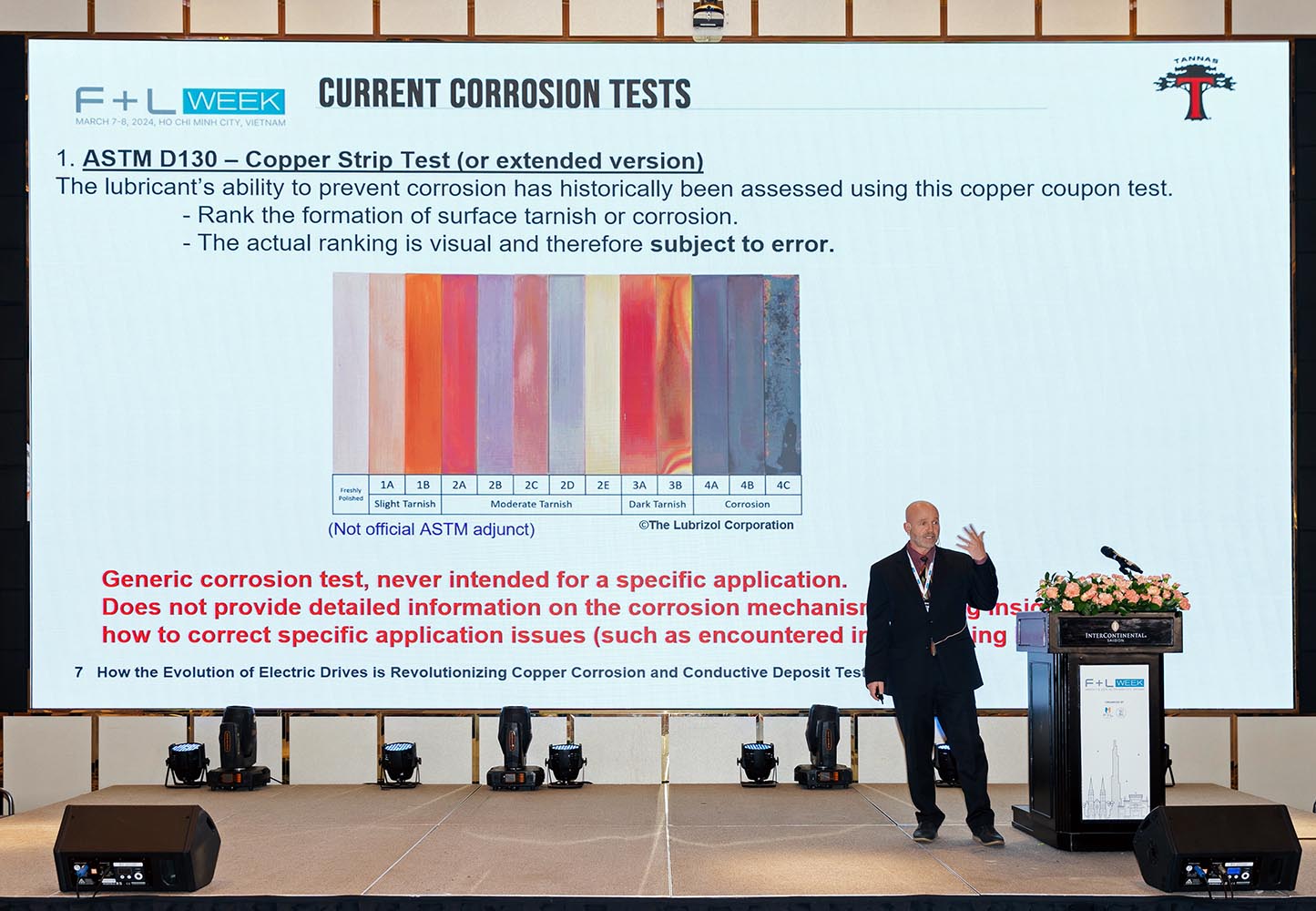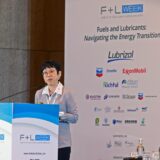
New ASTM Corrosion Test unveiled at F+L Week 2024 in Vietnam
The ASTM D130 Copper Strip Corrosion Test, introduced in 1922, has long served as the benchmark for assessing copper corrosion. However, concerns exist around the test’s reliability due to its reliance on operator judgment and variations between testing laboratories.
Greg Miiller, VP of Engineering and New Business at Savant Inc., tackled these concerns at F+L Week 2024 in Ho Chi Minh City, Vietnam, indicating that the D130 test does not adequately meet the demands of modern electric vehicle applications. As electric motors and electronics increasingly interact with lubricants, the risk of copper corrosion and potential conductive deposit formation on critical components has become a pressing issue.
During his presentation, Miiller unveiled a brand-new ASTM test, the Conductive Deposit Test (CDT), designated as ASTM D8544-24. While the test is set to officially launch on March 14, F+L Week attendees were treated to a preview at the event. ASTM D8544 quantifies the accumulation of conductive deposits over time, providing crucial insights into the risk of corrosion within electrified systems.The CDT is one of two methodologies being developed by Savant Laboratory and its partners, Lubrizol, APL and the Ford Motor Company. A proposed ASTM standard for a Wire Corrosion Test (WCT) provides an evaluation of corrosion risk over a 72-hour period at two critical temperatures (130 and 150 degrees Celsius). Currently in the round-robin stage, the WCT monitors real-time corrosion events with remarkable accuracy, precision and repeatability, says Miiller.
Although various iterations of these tests are already in use across the automotive industry, the tests are not standardised. The development of the two tests represents a collaborative effort aimed at harmonising corrosion and deposit control testing practices. Together, the CDT and WCT offer a predictive assessment of the corrosion and deposit risk in electrified systems.
The introduction of the ASTM test represents a significant step forward in addressing the unique challenges posed by electric vehicles. Miiller also underscored the broad applicability of the tests beyond automotive applications, such as in the marine sector. The American Society for Testing and Materials (ASTM), now known as ASTM International, plays a critical role in the development of international standards for a wide range of materials, products, systems, and services, including automotive lubricants.
ASTM develops and publishes standardized test methods that are used globally to evaluate the properties and performance of automotive lubricants. These test methods cover various aspects of lubricant performance, such as viscosity, volatility, wear protection, oxidation stability, and compatibility with materials. By providing a standardized approach to testing, ASTM ensures that lubricant properties can be accurately measured and compared across different products and manufacturers.
ASTM’s standardized test methods and performance criteria help ensure the quality and consistency of automotive lubricants in the market. Manufacturers use these standards to design and formulate lubricants that meet specific performance requirements, while consumers and service providers rely on them to select the appropriate lubricants for their vehicles. This contributes to the overall efficiency and durability of automotive engines and helps prevent engine wear and failure.













